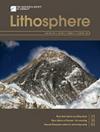Identifying the Change of Seepage Field in Karst Aquifer under Tunnel Engineering: Insight from FEFLOW Modeling
IF 1.7
4区 地球科学
Q3 GEOCHEMISTRY & GEOPHYSICS
引用次数: 1
Abstract
Water inrush is one of the most serious phenomena threatening the safety of tunnel construction. The West Qinling 1# tunnel, as the major section of the Bailong River diversion project, traverses a complicated karst area and would be faced with a water inrush disaster. Based on geological and hydrogeological conditions, the Finite element subsurface flow system software is used to simulate and predict the development of the natural seepage field and dredging construction conditions of the seepage field on the West Qinling 1# tunnel area. The prediction results show that the groundwater level will drop up to 113.9 m under dredging construction conditions, with an impact radius of up to 11.5 km. Seepage field evolution and water influx were simulated under two conditions of construction plugging construction, respectively. The prediction results show that the groundwater level in the middle part of tunnel 1# is 112.68 m depth without blocking condition with an influence range of 10.5 km. The maximum water volume per unit length of the karst cave increases to 4.32 m3/d·m. In the plugging condition, the influencing scope does not significantly reduce, but the extent of the impact is greatly weakened. The groundwater level generally dropped at 10–25 m depth and the karst cave section unit length of the maximum water volume of 0.83 m3/d·m in the rainy season. The achievements of this study would provide a vital reference for the prevention of water inrush in karst tunnel construction.隧道工程条件下岩溶含水层渗流场变化识别:基于FEFLOW模型的启示
突水是威胁隧道施工安全的最严重的现象之一。西秦岭1#隧道作为白龙江引水工程的主要区段,穿越复杂的岩溶区,将面临突水灾害。根据地质、水文地质条件,利用有限元潜流系统软件对西秦岭1#隧道区域天然渗流场的发展及渗流场的疏浚施工条件进行了模拟和预测。预测结果表明,在疏浚施工条件下,地下水位将下降113.9 m,影响半径达11.5 km。分别模拟了两种施工封堵条件下的渗流场演化和水侵量。预测结果表明:1#隧道中部地下水位为112.68 m,无堵塞情况,影响范围为10.5 km。溶洞单位长度最大水量增加到4.32 m3/d·m。在堵塞状态下,影响范围不明显减小,但影响程度大大减弱。雨季地下水位普遍在10 ~ 25 m深度处下降,溶洞断面单位长度最大水量为0.83 m3/d·m。研究成果将为岩溶隧道施工中防治突水提供重要参考。
本文章由计算机程序翻译,如有差异,请以英文原文为准。
求助全文
约1分钟内获得全文
求助全文
来源期刊

Lithosphere
GEOCHEMISTRY & GEOPHYSICS-GEOLOGY
CiteScore
3.80
自引率
16.70%
发文量
284
审稿时长
>12 weeks
期刊介绍:
The open access journal will have an expanded scope covering research in all areas of earth, planetary, and environmental sciences, providing a unique publishing choice for authors in the geoscience community.
 求助内容:
求助内容: 应助结果提醒方式:
应助结果提醒方式:


